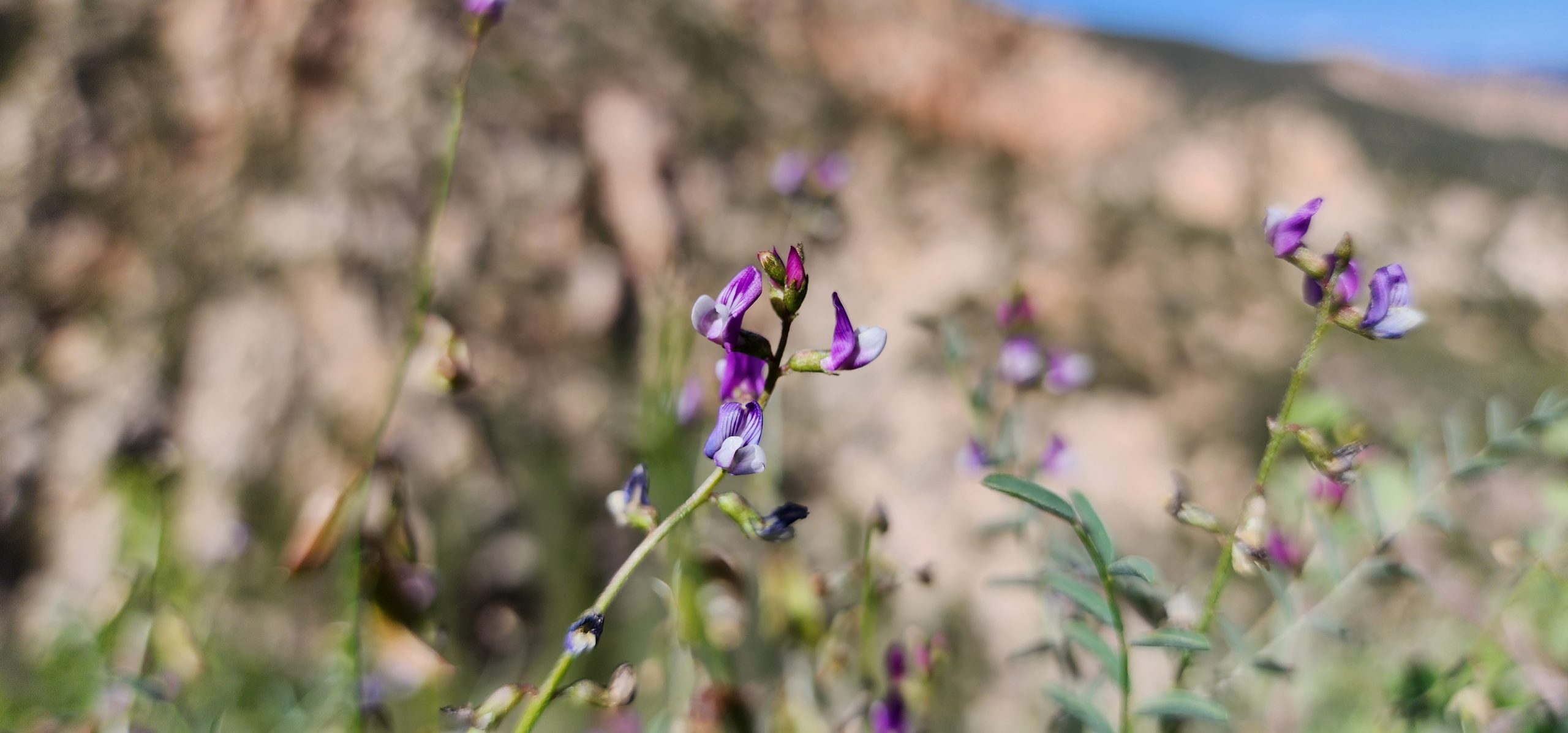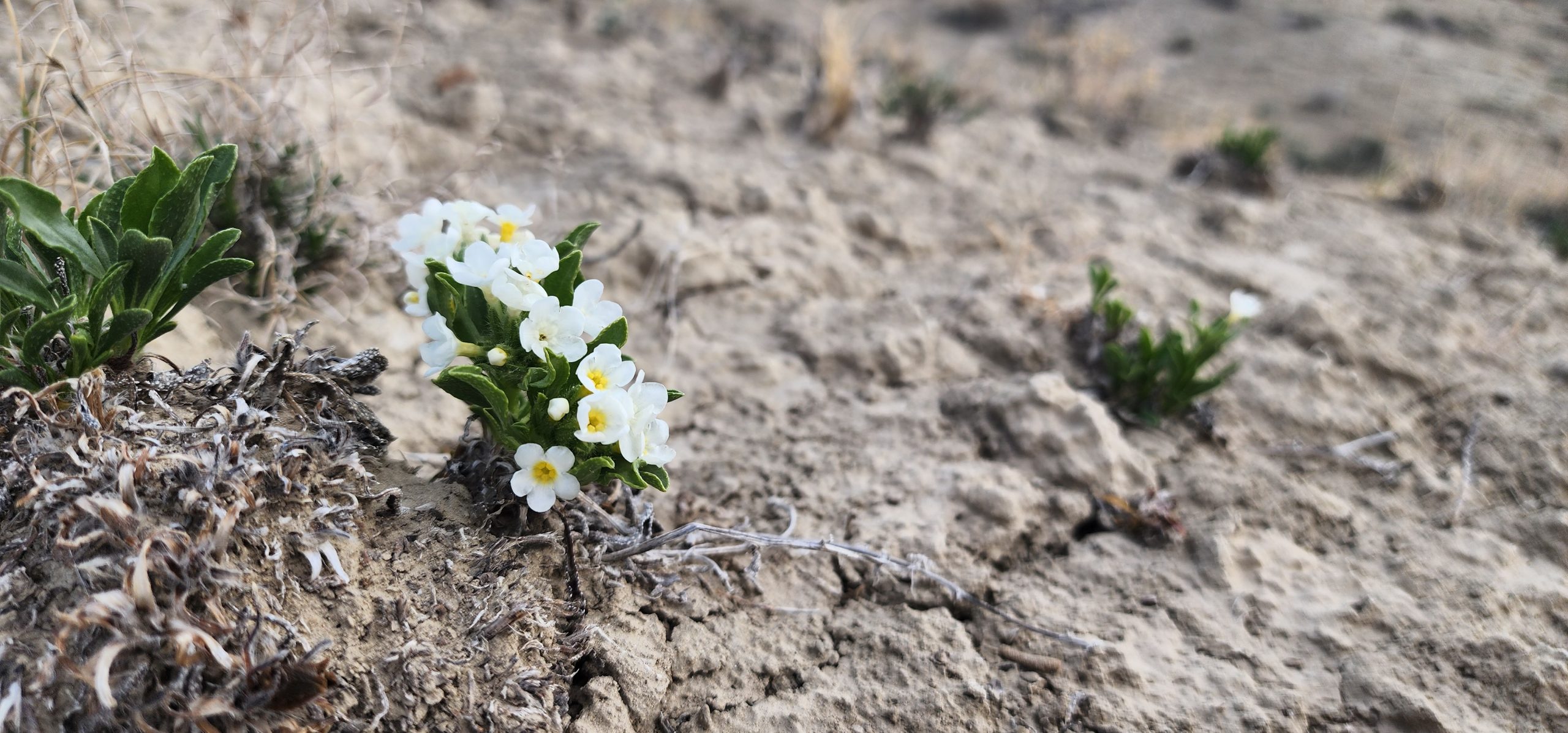Save Plants: September 2018 Newsletter
CENTER FOR PLANT CONSERVATION
September 2018 Newsletter
Fire can bring great destruction, as we know all too well. As I write this introduction to our newsletter there are dozens of fires burning throughout the American West. At its peak in late July, there were over 80 significant fires, many of which in California. This increased fire frequency is all too present in the sun-scorched hills in and around CPC’s National Office in Escondido, California. In the last two months alone there have been three wildfires that have threatened our offices at the San Diego Zoo Safari Park, two of which prompted evacuations. In the best of situations, these fires were once seasonal in this part of the world. But with increased drought, higher temperatures and an abundance of fuel owing to many invasive weeds, fires occur here now almost year-round.
Despite the negatives, many ecosystems actually benefit from fire. Fire removes accumulated deadwood and leaf litter, increases available nutrients in the soil, and even induces many species to flower, fruit and/or release their seeds. In this way, fire is not the end of an ecosystem but rather a rebirth of it.
Balancing these two seemingly opposite forces of fire is the challenging job of many of our Participating Institutions. Plant conservationists work to Save Plants in the wake of climate change while utilizing fire to manage the ecosystems where these species occur. In this month’s issue of Save Plants, we explore a number of these efforts and detail how the damaging effects of fire can be managed while the life-giving opportunities it brings are harnessed to Save Plants. Read on to learn about the fascinating and essential role that fire plays in the lives of the plants we endeavor to save.
Built to Burn
Southeastern US forests were once described as so extensive and dense that a squirrel could travel from the coast to the mountains without ever touching the ground. But historical accounts from early explorers, and other convincing evidence, clearly show that this region was actually more like a savanna – dominated by vast open meadows with scattered trees – for at least the last twenty thousand years. It was primarily the regular occurrence of fire that shaped this landscape, and many others of the continental US: they are ecosystems built to burn.
The general perspective on wildland fires in the early 20th century was guided by the attitude of Smokey Bear, whose slogan, “Only you can prevent forest fires” led the national campaign to suppress all fires no matter where they occurred or how they started. Following Smokey – Bambi – the 1942 Disney film with its horrific forest conflagration scene, left no doubt on an entire generation that fire harmed nature.
But toward the later part of the 20th century ecologists, land managers, and foresters slowly gained traction with the message that fire was an essential element for forest health and for the thousands of sun-loving wildflowers of the prairies, savannas, chaparral, and other fire-prone natural areas. Some ecologists went so far as to say that no single human modification of the environment has had more pervasive and widespread negative consequences for the ecological integrity of North America than the suppression of fire. Even Smokey Bear’s mantra changed to, “Only you can prevent wildfires.” But the damage was done – forests and other wildlands, over many decades, accumulated tremendous amounts of fuel, the human population built homes within huge tinderboxes, and many of the sun-loving herbaceous flora was shaded-out and declined to the point of imperilment.
Several CPC Participating Institutions hold the germplasm and work to recover the imperiled sun-loving herbaceous plants that reside in fire-dependent ecosystems, and at least half of North Carolina Botanical Garden’s 46 National Collection species are in some way reliant on fire. Of these, there are a few that particularly stand out.
Sandhills lily (Lilium pyrophilum), whose Latin specific epithet means fire-loving, is an obvious first choice! This strikingly beautiful rare denizen of the stream-heads and moist seeps of the Sandhills ecosystem in Virginia, North Carolina, and South Carolina, is not itself dependent on fire, but the longleaf pine ecosystem within which it resides is. So on a landscape scale, Sandhills lily loves fire, although it’s happy to avoid direct contact.
The Sandhills are dominated by longleaf pine (Pinus palustris), which is emblematic of this ecosystem and thus considered a flagship species, and a suite of mostly herbaceous plants adapted over the millennia to a one- to three-year fire frequency. These adaptations to fire include deep rootstocks, fire-resistant bark, and sturdy seeds that require heat or smoke to germinate.
East of the Sandhills, the wet pine savannas of the North American Coastal Plain are graced with over 1,800 endemic plants, a fact that prompted its recognition by Critical Ecosystem Partnership Fund as the world’s 36th Biodiversity Hotspot.
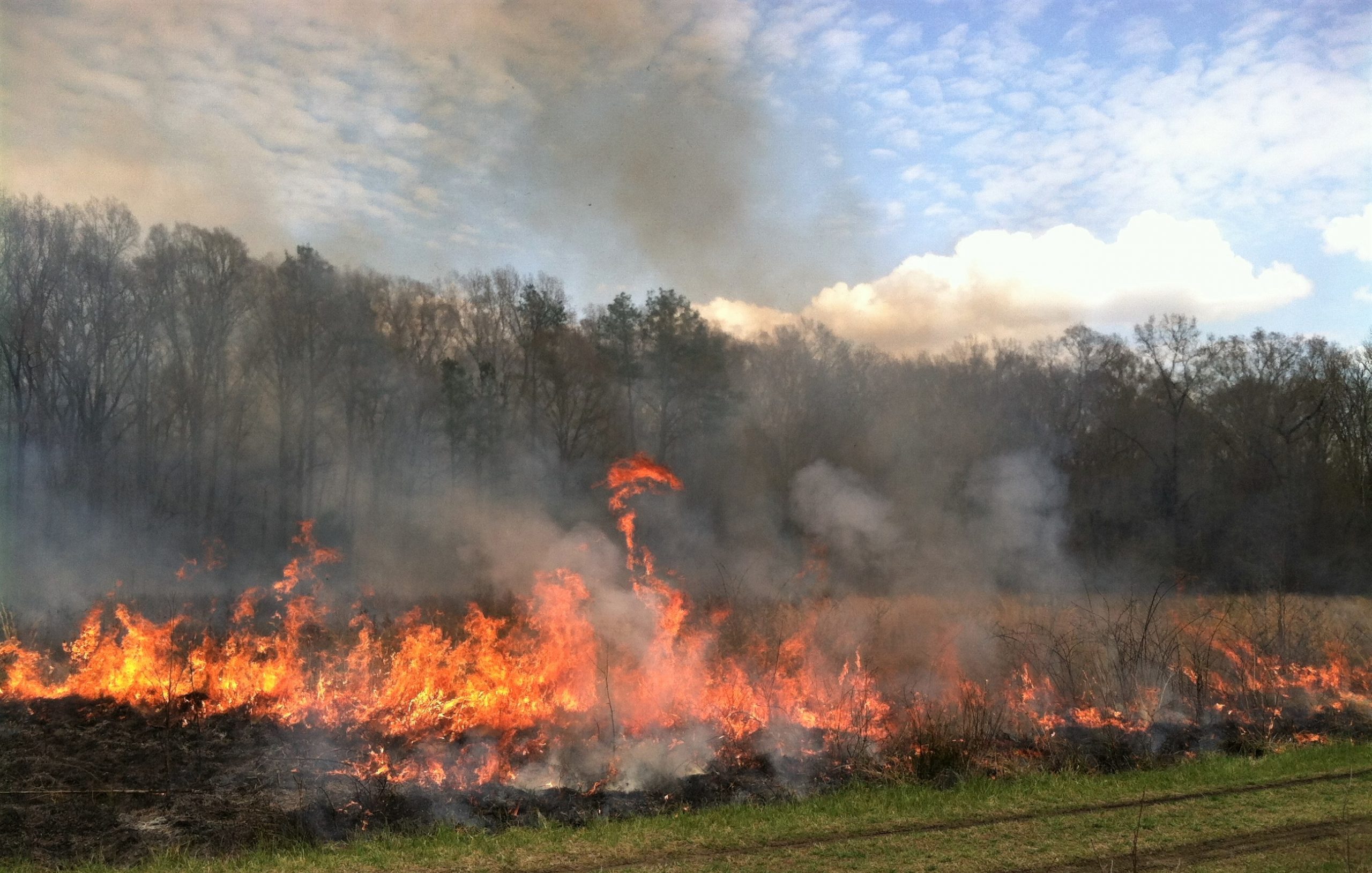
One of these endemics, Venus flytrap (Dionaea muscipula), occurs only within a 50-mile inland radius of Wilmington, NC. Frequent controlled burning, and the occasional wildfire, ensures that shrubs don’t overtop and shade-out Venus flytrap and its many associates, including numerous other carnivorous plant species.
It’s interesting to note that dozens of imperiled plants, including Sandhills lily and Venus flytrap, ironically found salvation in the bombing ranges of Fort Bragg and Camp Lejeune military bases in NC. This truly “friendly fire” kept these sites burning through the decades of fire suppression! Other military bases around the country also boast hordes of rare plants because of their bombing ranges and development restrictions, but that’s another story…
Closer to home, and without the aid of bombs, the North Carolina Botanical Garden uses fire to help protect over 1,000 acres of nature preserves in the Piedmont Savanna. One of these is the Penny’s Bend Nature Preserve, adjacent to the state’s Plant Conservation Program preserves – all of which contain a treasure trove of rare and fire-dependent plants. The flagship species in these preserves is smooth coneflower (Echinacea laevigata), which, like much of the Piedmont savanna flora, was relegated to roadsides and rights-of-way through the decades of fire suppression.
About 20 years ago, NC Botanical Garden and Plant Conservation Program formed controlled burn crews who individually and together began resurrecting these fire-dependent species. Through careful fire management and select reintroduction, smooth coneflower and other rare plant populations are now thriving.
Beyond helping to revive rare plants, reintroducing fire has other benefits. Controlled burning maintains the overall “grassy” habitats necessary for regionally-declining ground-nesting birds such as bobwhite quail, whip-poor-wills, and meadow larks. Fire also reduces many plant pests, such as weevils that eat seeds. And wildlife and humans alike enjoy the significant decline of ticks where fire regularly occurs!
Yet it is sometimes difficult to recognize the importance of fire to natural ecosystems with the continuing incidence of megafires torching thousands of homes. In the best of all possible worlds, we would have thoughtful controlled burning for increasing ecosystem health, and humans would choose not to inhabit ecosystems built to burn. North Carolina Botanical Garden and its burn crew is working towards that ideal, providing burns where they can and educating the public on the importance of fire.
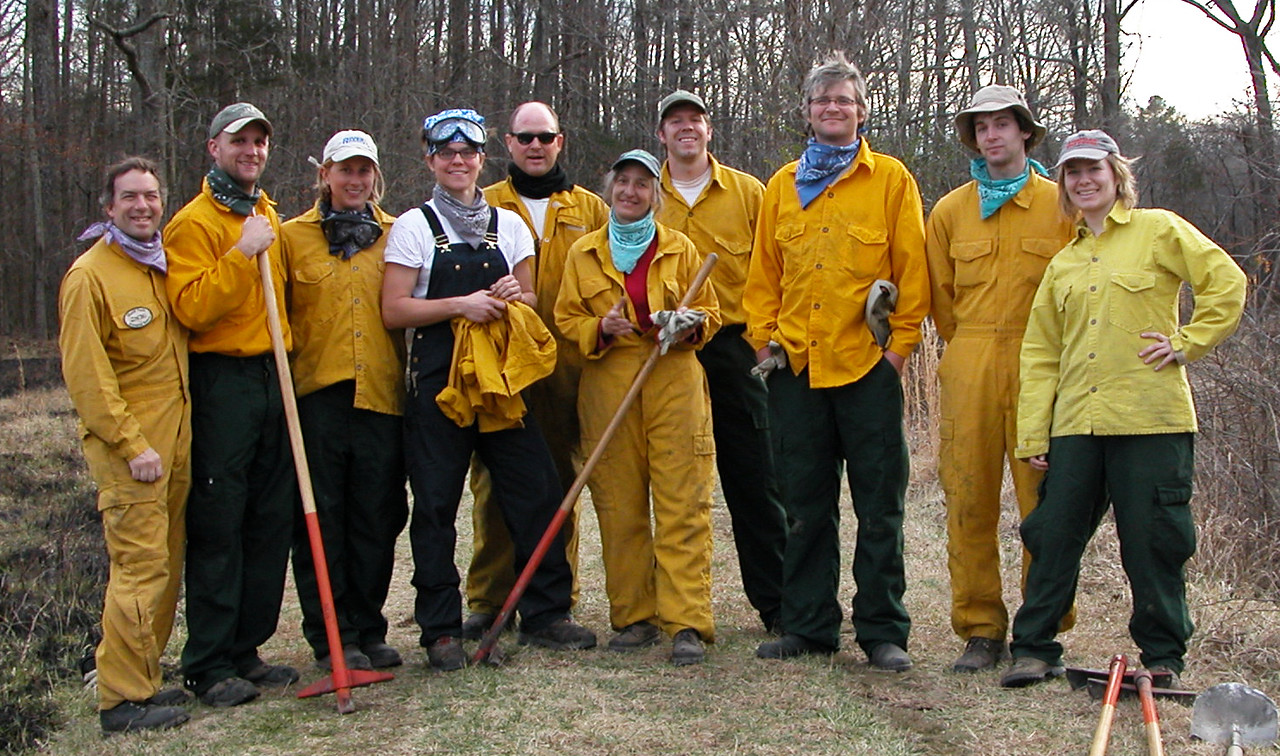
-
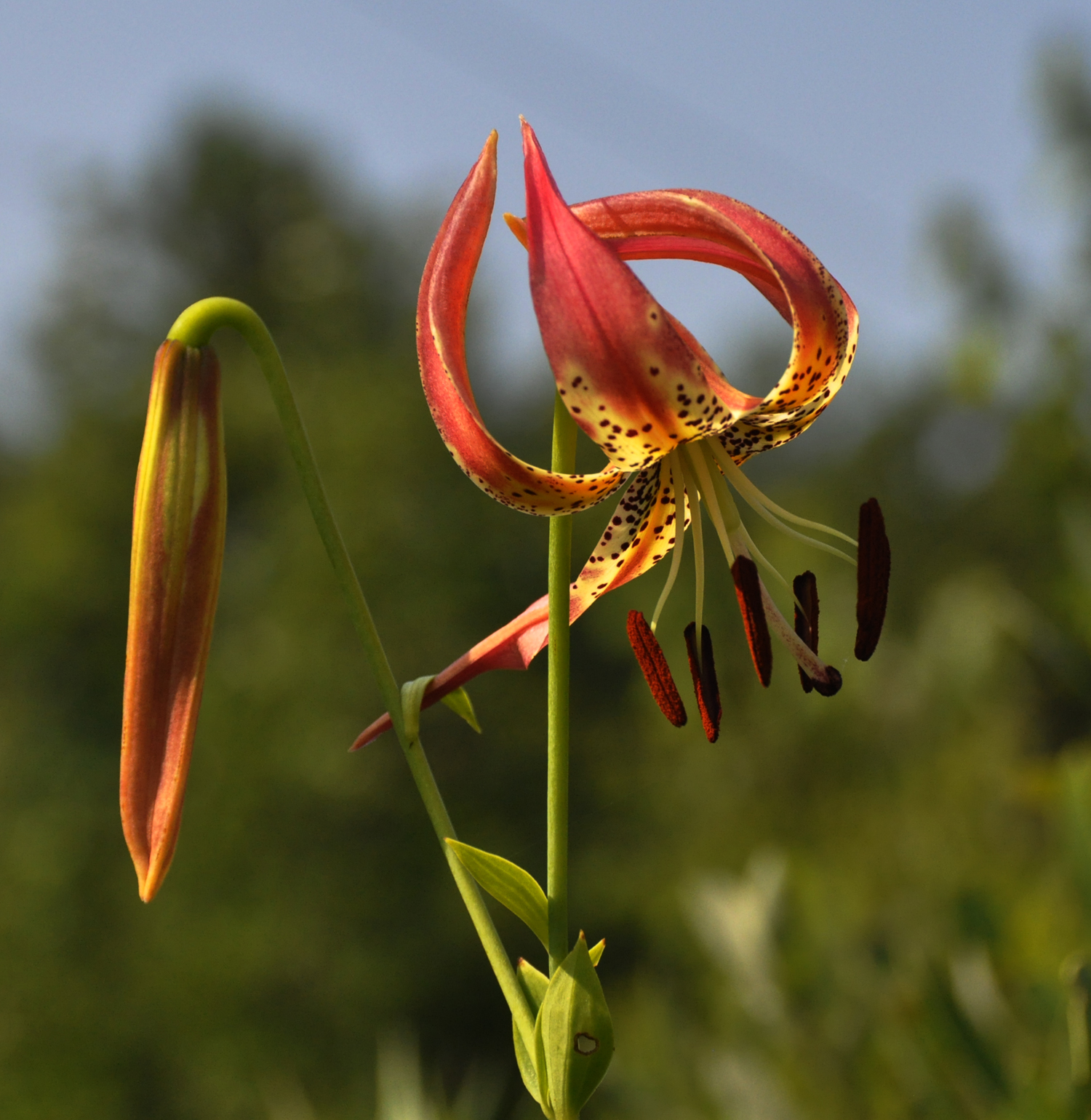
Sandhills Lily (Lilium pyrophilum). Photo by Johnny Randall, courtesy of the North Carolina Botanical Garden. -
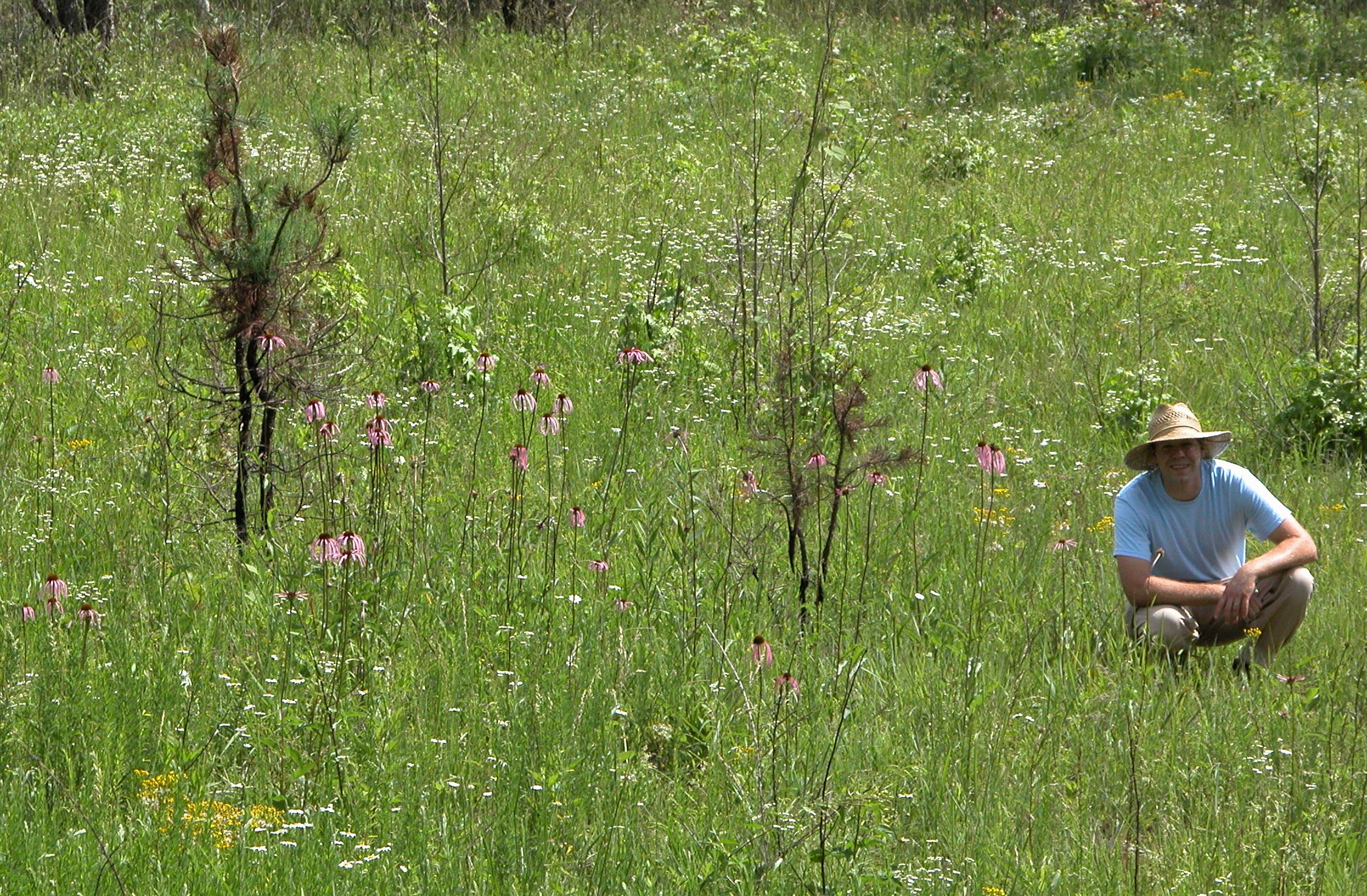
Smooth coneflower (echinacea laevigata) site. Photo by Johnny Randall, courtesy of the North Carolina Botanical Garden. -

Smooth coneflower (echinacea laevigata) site. Photo by Johnny Randall, courtesy of the North Carolina Botanical Garden.
Adapting to the Recurring Threat of Wildfire
On the night of May 7, 2009, the Jesusita Fire swept through the Santa Barbara Botanic Garden (SBBG). The fire burned through many areas of the garden, including the rare plant section, and wiped out displays, a bridge, and a historic building. But it did not get the rare island barberry (Berberis pinnata ssp. insularis) seedlings growing in the nursery.
Maintained as part of the CPC National Collection, island barberry is a species that was originally found on three of the California Channel Islands and is now limited to just one. At the time of the fire there were thought to be only five individuals remaining in the wild. Knowing that every individual of the species was precious, Heather Federlein, Plant Propagation Manager at SBBG, packed all the island barberry pots into her car before being evacuated from the garden. There was no formal evacuation plan, no checklist of things to do or take, Heather simply saw a need and acted.
In the end, the Jesusita fire burned 8,733 acres, destroyed 80 homes, and forced 35,000 people to be evacuated. But the fire’s legacy wasn’t all destruction. After the fire, the garden began to recover. Some of the species in the garden even seemed to thrive afterwards, which is not surprising given the many fire-adapted ecosystems in California. Santa Cruz Island bushmallow (Malacothmnus fasiculatus var. nesioticus), another National Collection species, not only resprouted post-fire but expanded – spreading by underground roots. This reaction clued SBBG’s conservation scientists as to how this species – and others similar to it, like Lompoc yerba santa (Eriodictyon capitatum) – might respond to fire in the wild. As a result, they have conducted surveys to collect pre-fire data should the wild populations be impacted by a fire.
It wasn’t just the garden’s plants that recovered. The burned bridge was rebuilt, a new conservation center was built on the site of the historic building, and the garden began to formalize its fire preparedness plans. The Pritzlaff Conservation Center is soon to be a LEED® certified, sustainable building that houses research and administrative staff, classroom and art exhibition spaces, and research labs, as well as the garden’s seed bank and herbarium collections. The building was constructed free of wood and the collections are kept underground in the basement, lending additional protection from wildfires. And wildfire plans are now available where each employee can reference them from anywhere online.
Direct destruction by fire is not the only threat that wildfires pose. Fires often result in a loss of power and evacuation of the staff who tend to everything. Though the seed bank freezers in the Pritzlaff Conservation Center have back-up batteries powered by solar panels, even this is not foolproof. Heather Schneider, Rare Plant Biologist, has installed an alarm system that sends a text to staff when the temperature drops. She is also working towards putting together a plan for quickly and safely transporting the seed, without thawing or damage from condensation, to freezers in a location not likely to be impacted by the same wildfire event.
Just this past December, the Thomas Fire roared through Ventura and Santa Barbara Counties, burning over 280,000 acres to become the largest fire in state history (until just this last month, when the Mendocino Complex Fire surpassed it). The Garden was in the evacuation zone and staff were kept off-site for two weeks. And though they had formal wildfire plans and backup power, there was still plenty to worry about.
While working remotely for two weeks, Denise Knapp, Director of Conservation and Research, couldn’t help but be concerned for the data at the Conservation Center. Even with much of the garden’s data and records digitized, the server itself was located on the garden grounds and thus subject to fire risk – and not all of the data were accessible remotely. Since then, SBBG’s IT team has been working to back-up the server off-site.
Wildfires will be a recurring issue that impact not only SBBG, but many other gardens, institutions, and citizens. SBBG has learned a lot from its experiences with fire, and is better prepared than ever to deal with such an emergency. Ultimately, as Denise Knapp points out, it’s the passion and dedication of her co-workers, people like Heather Federlein and Heather Schneider whose concern for the collections in their care leads them to plan and act with the plants in mind, that will protect the Garden’s most valuable resources. It is amazing plant-lovers like them who help the garden adapt and who will conserve the garden’s priority collections in times of crisis in the future.
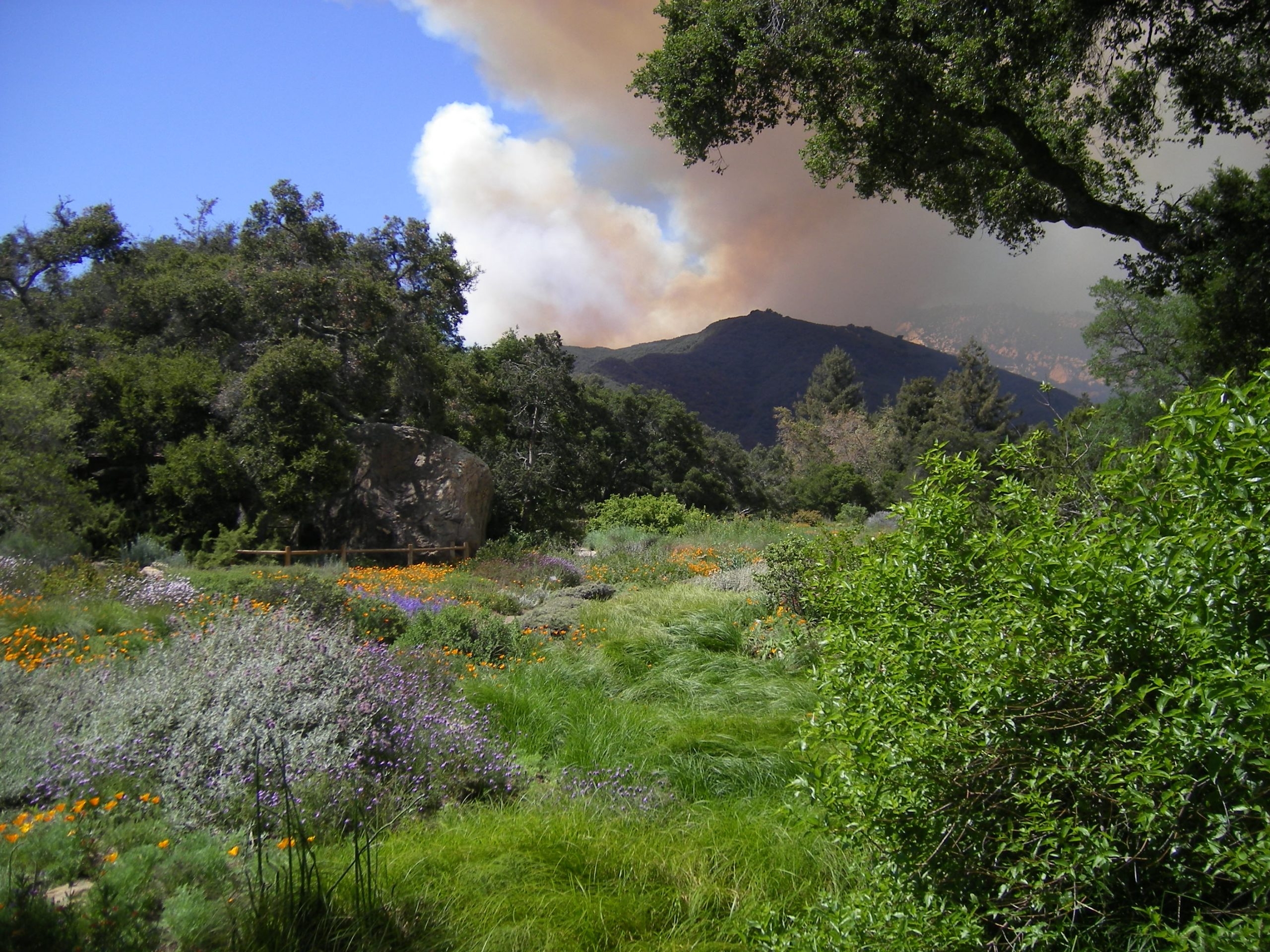
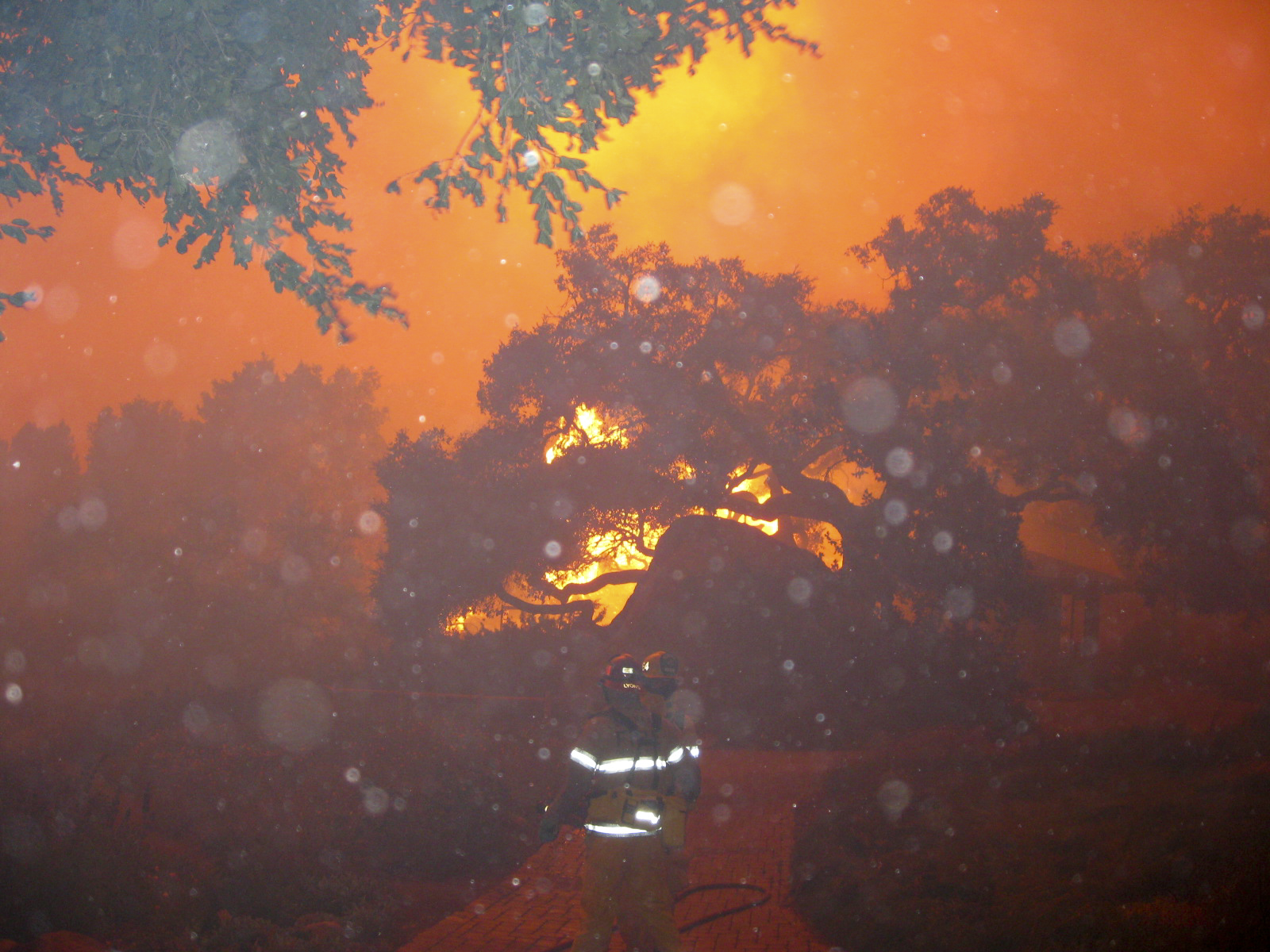
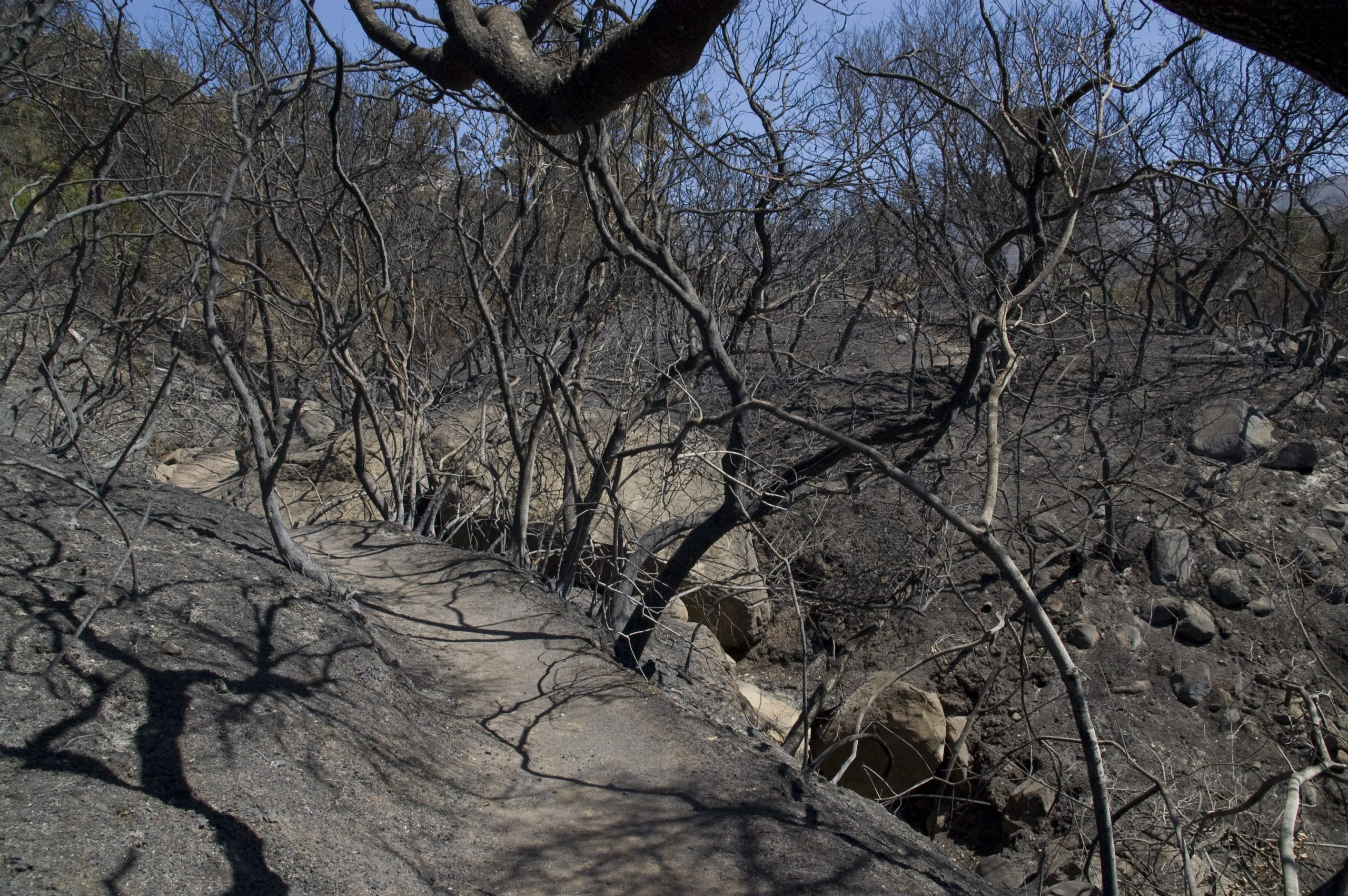
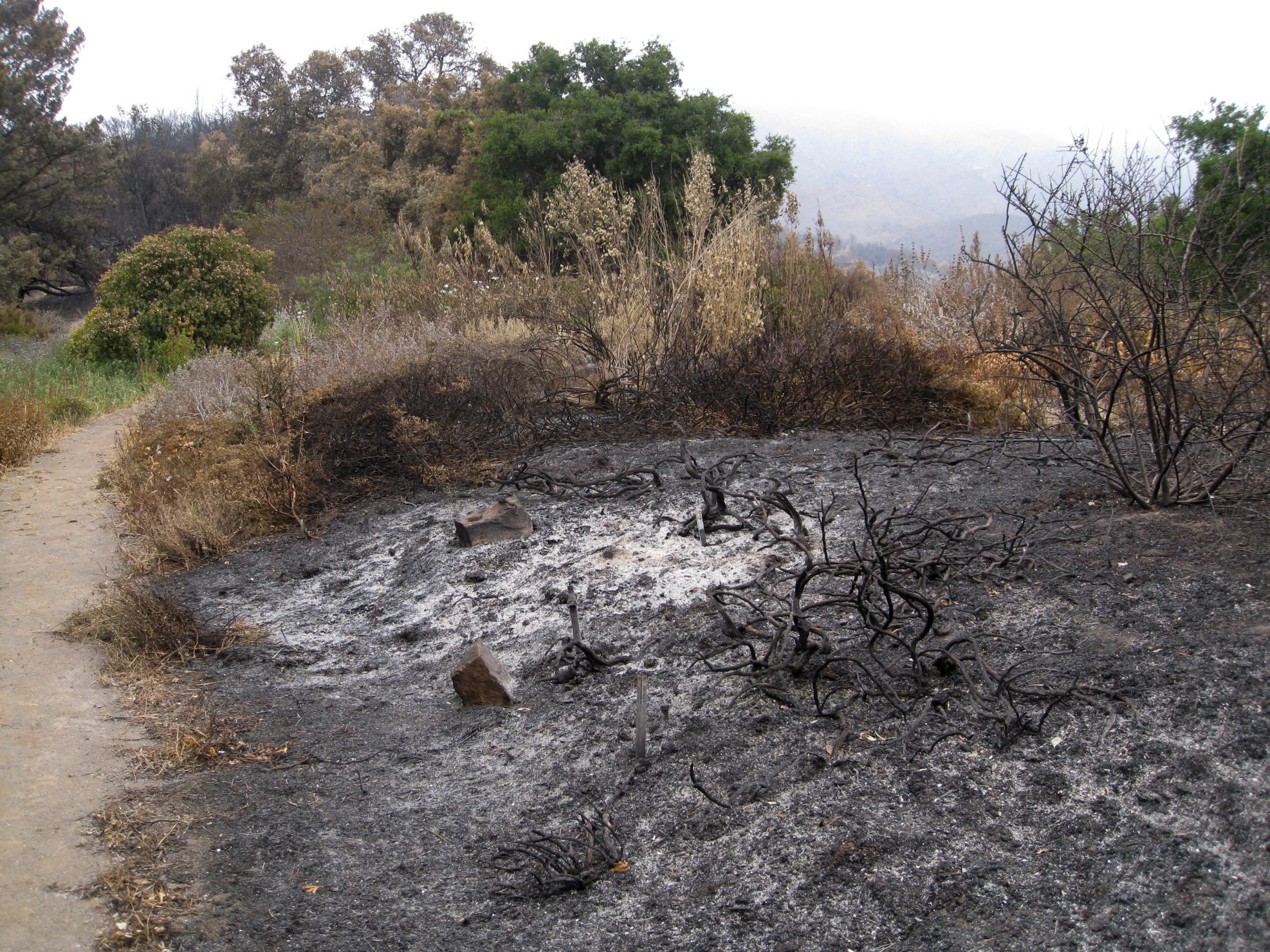

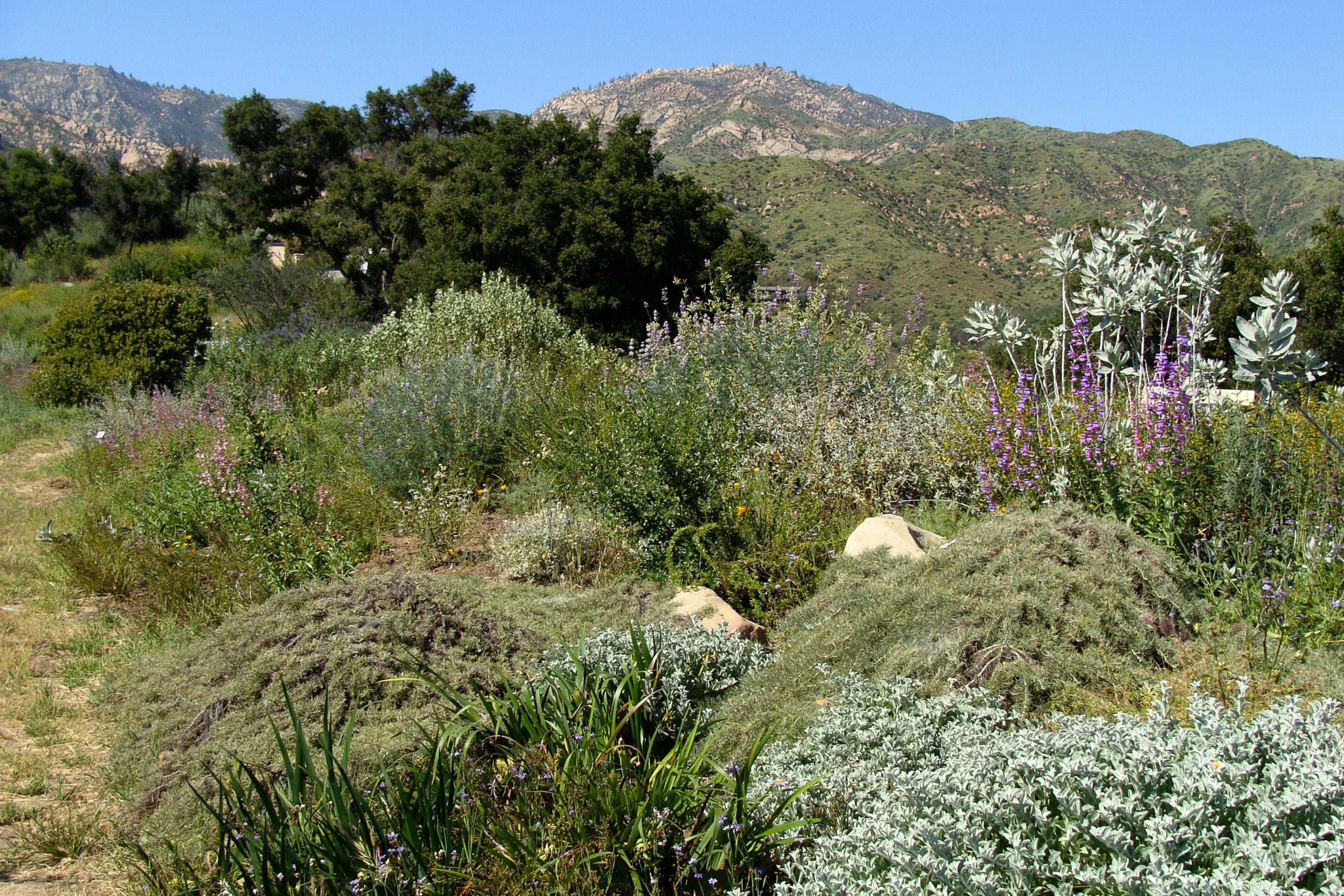
-
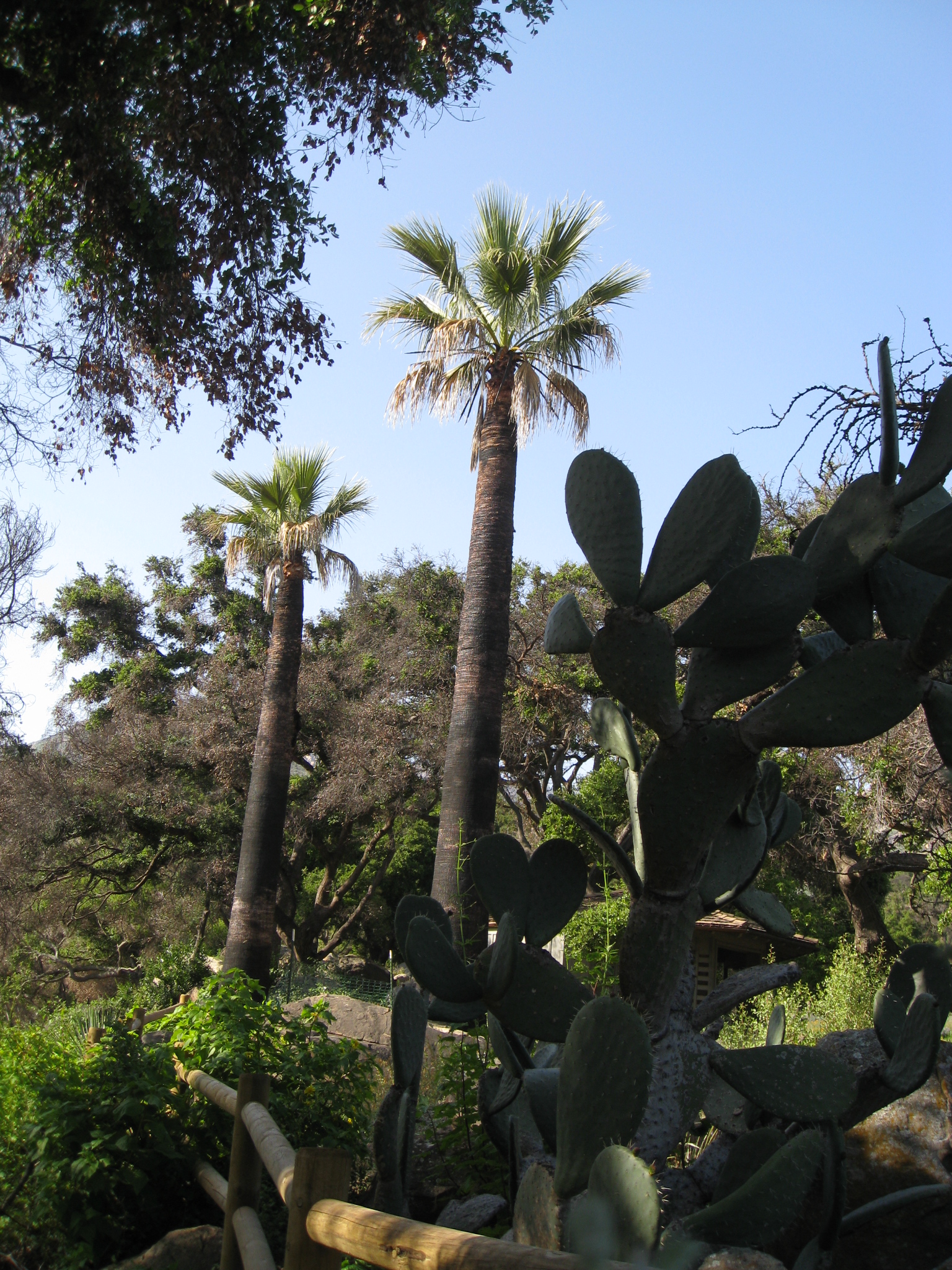
SBBG after Jesusita Fire. One year after the fire, the California fan palms (Washingtonia filifera), scorched as the fire passed through the Desert Section of the Garden, had green crowns topping their blackened trunks. Photo by John Wardlaw, courtesy of the Santa Barbara Botanic Garden. -
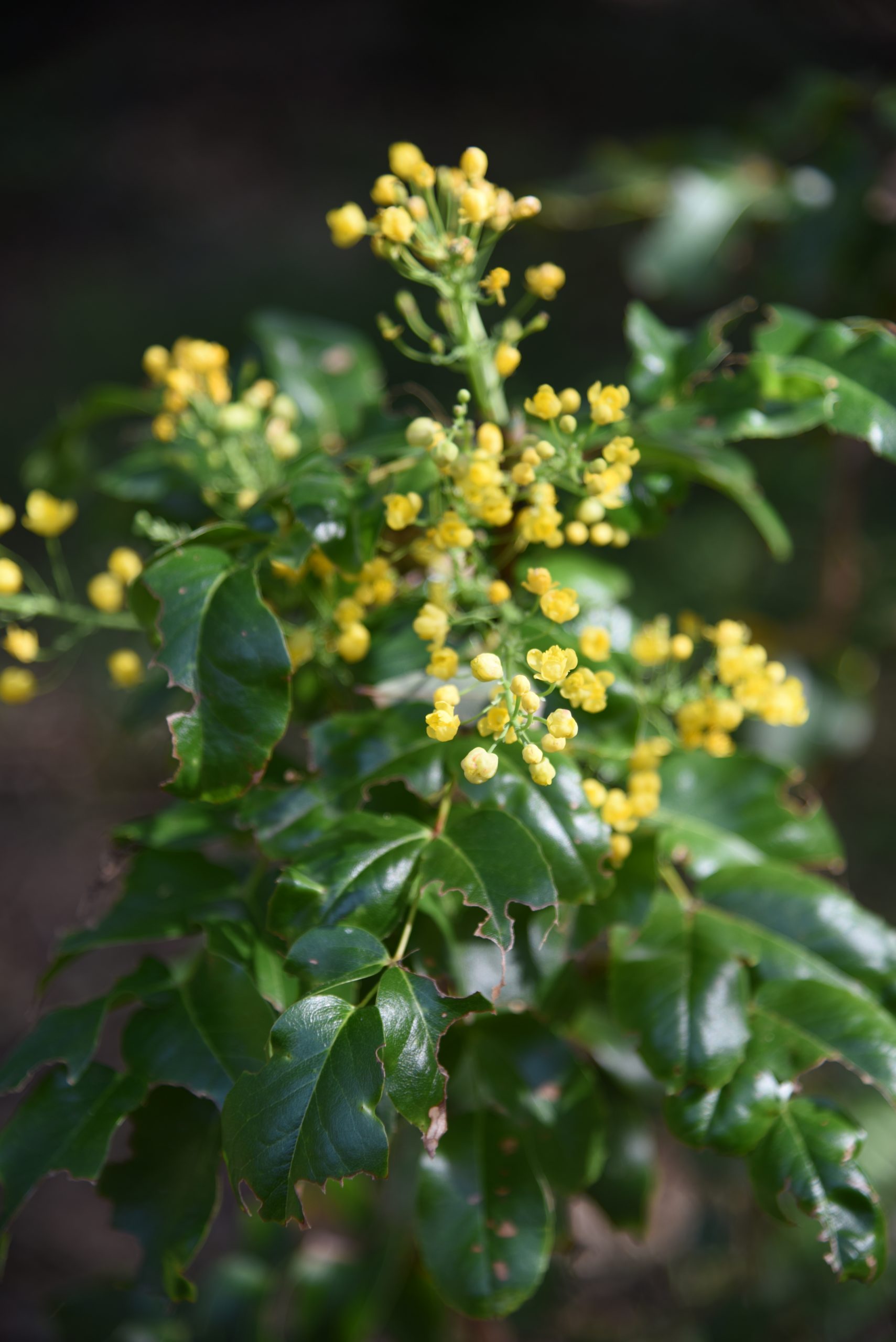
Island barberry (Berberis pinnata insularis) seedlings housed in SBBG’s nursery were saved from the threat of the Jesusita Fire in 2009 by dedicated Plant Propagation Manager, Heather Federlein. Photo by Denise Knapp, courtesy of the Santa Barbara Botanic Garden. -
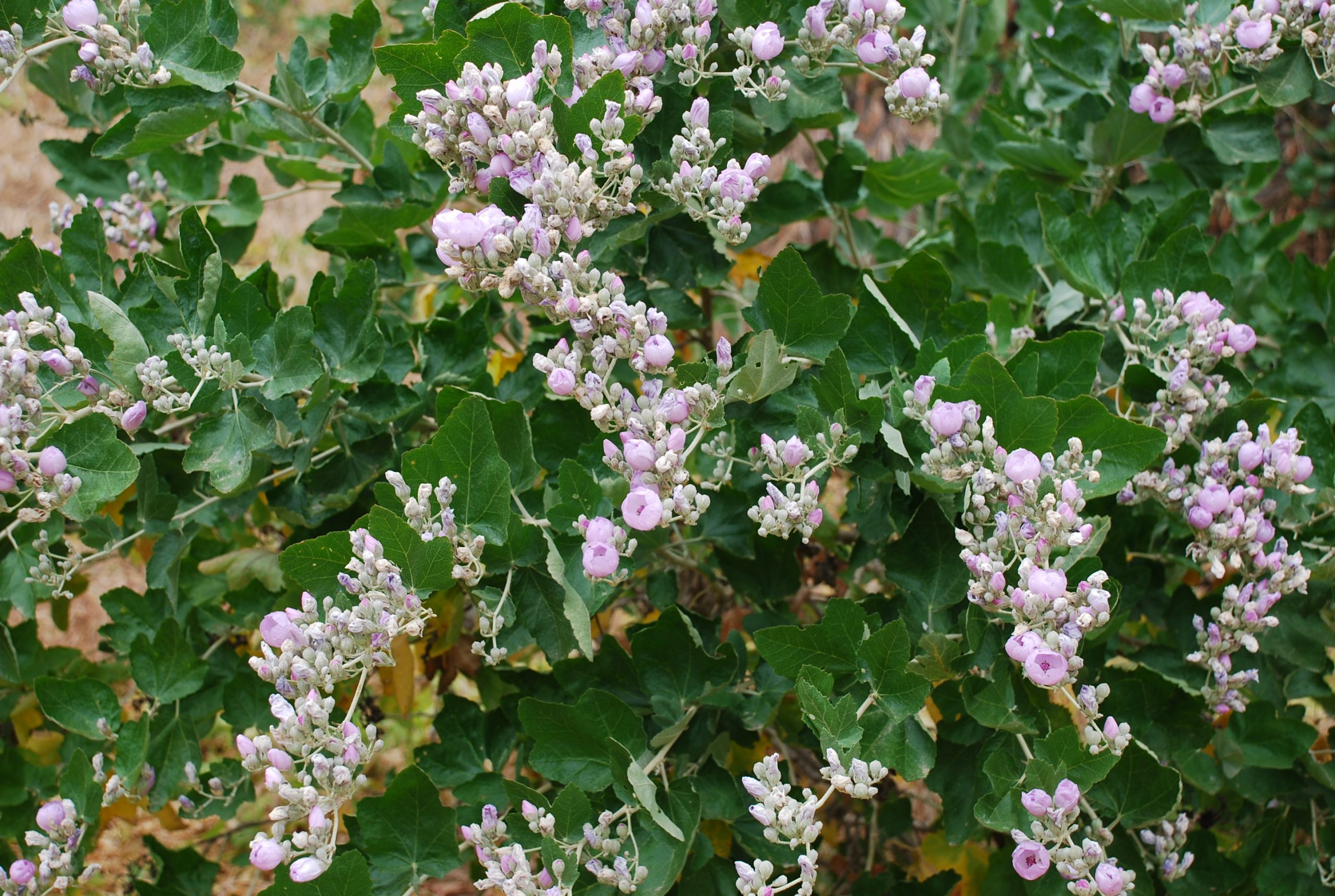
Santa Cruz Island bushmallow(Malacothamnus fasciculatus nesioticus) thrived at Santa Barbara Botanic Garden following the 2009 Jesusita Fire. Photo by Denise Knapp, courtesy of the Santa Barbara Botanic Garden.
Timing is Everything
On July 11th this year, three staff from UC Botanical Garden at Berkeley pulled to the side of Highway 140 near Savage Trading Post, a historical marker west of Yosemite Valley. Holly Forbes (Curator), Vanessa Handley (Director of Collections and Research), and Clare Loughran (Assistant Curator) had been in the car for some four hours and were eager to get to work collecting seed from the rare Merced clarkia (Clarkia lingulata). Forest Service botanist Joanna Clines graciously provided permission and detailed information about the populations.
Just three days later, several firefighting rigs would pull into the same spot at Savage Trading Post as CalFire used the space to stage firefighting efforts for what became known as the Ferguson Fire. The fire erupted on the night of Friday, July 13th, and wasn’t fully contained by firefighters until over a month and 96,901 acres later. The effects of the fire necessitated the closure of Yosemite National Park from August 3 -14. Two firefighters lost their lives, 19 people were injured, and 10 structures were destroyed. The perimeter of the fire grew quickly well past the Trading Post and the clarkia, but it is still unknown if the only two populations of this species, both precariously located on the margins of Highway 140, were impacted by the flames or firefighting efforts.
The team had great timing, and not just in terms of the fire. They arrived to collect when seed was ripe and ready, with only a few of the plants having already dispersed their seed. While in bloom from May to June, the clarkia’s bright pink petals make it stand out. However, they are decidedly less dramatic when seed-laden; dried out annuals are difficult to discern from its parental species, Mariposa clarkia (Clarkia biloba), which also occurs in the area (a rare example of sympatric speciation!). So, six weeks earlier, UCBG staff had been joined by three US Fish and Wildlife Service (USFWS) staff from the Sacramento office to flag 170 individual plants in each of the two populations, making sure that even in their undramatic state they could be found. Between flagging and collection times, Dr. Alison Colwell, Assistant Rare Plant Botanist for the California Native Plant Society, checked in on the populations from time to time to see how the seed was maturing. She let the UCBG team know when the time for collection had come.
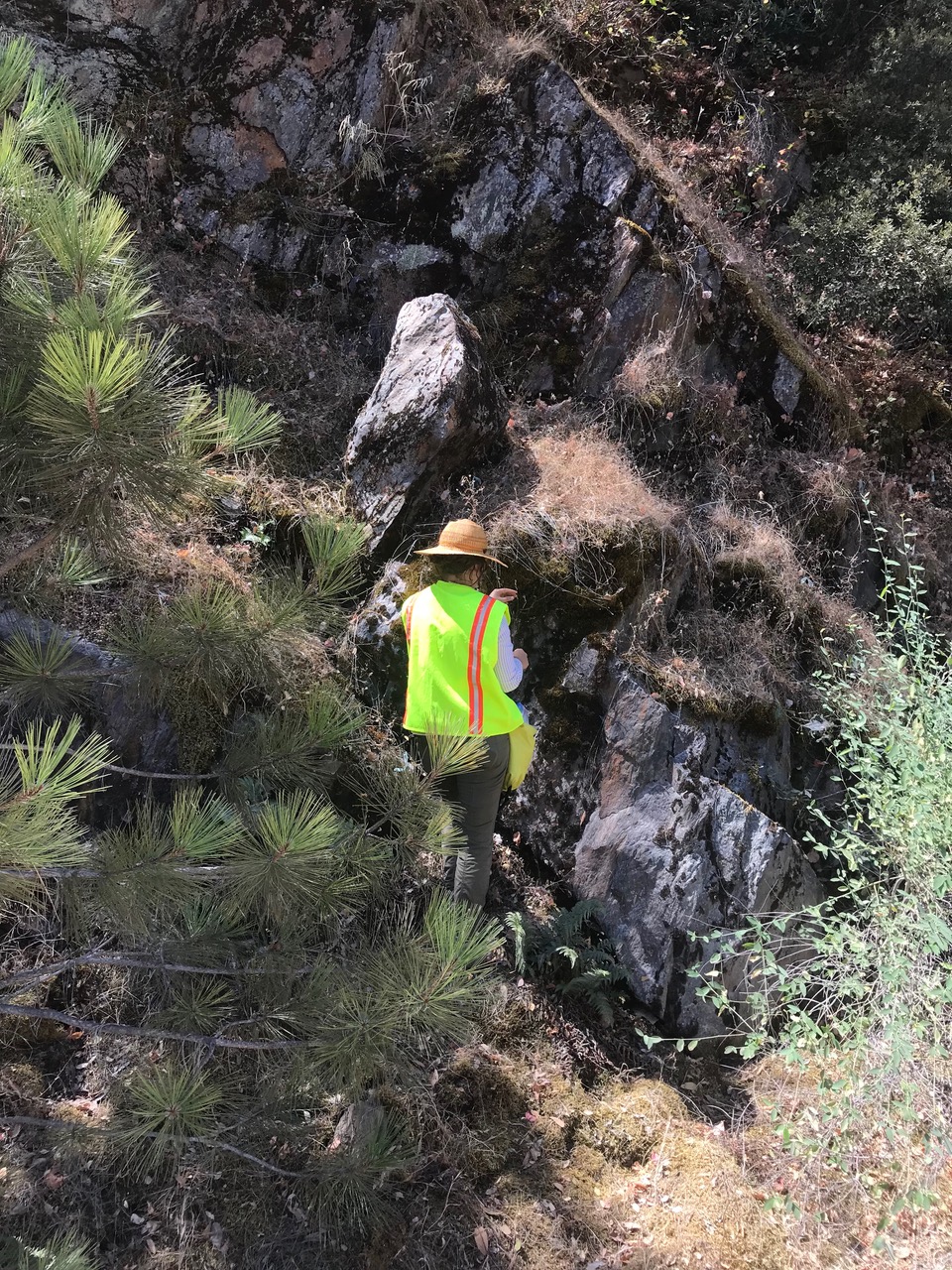
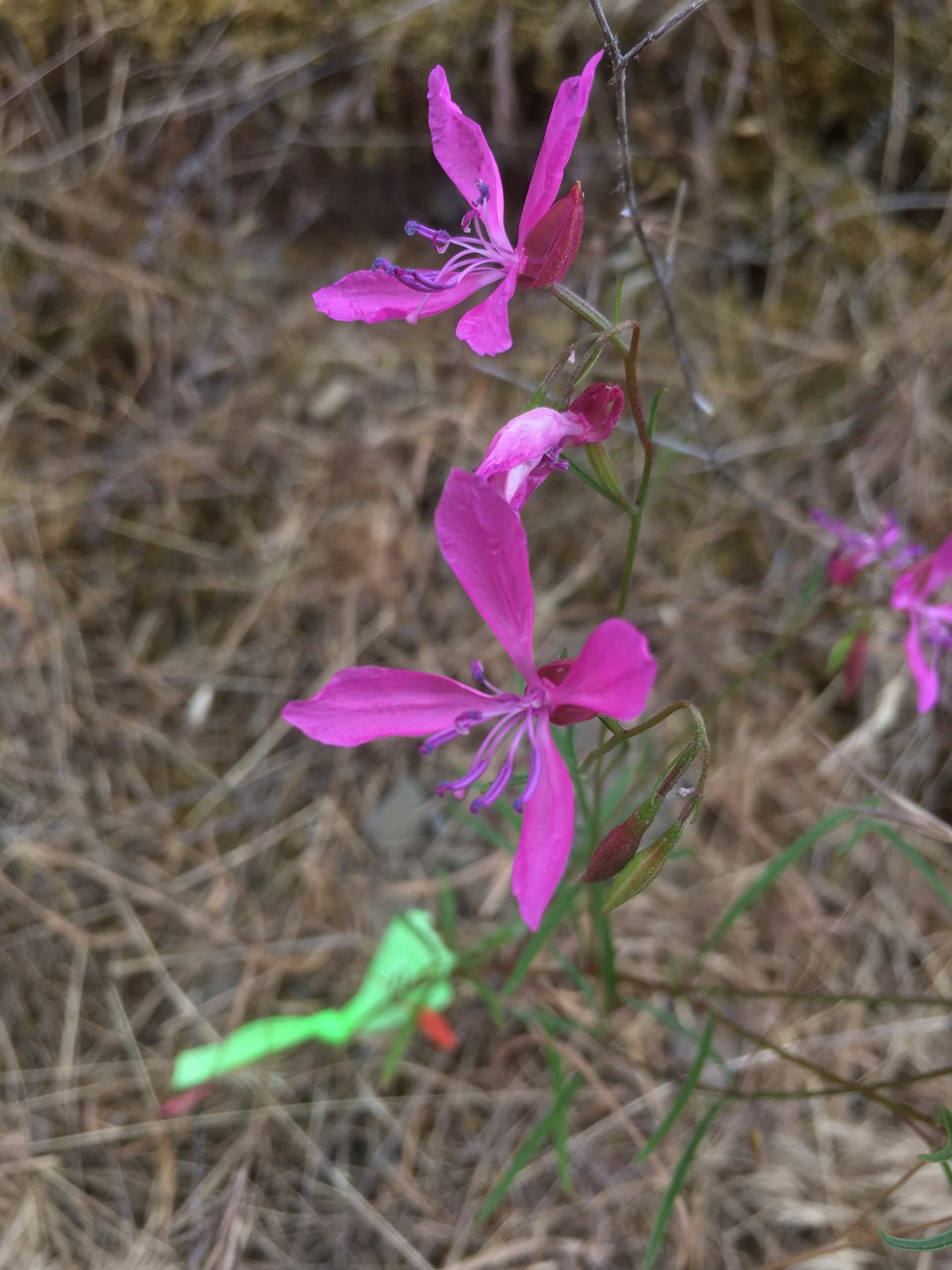
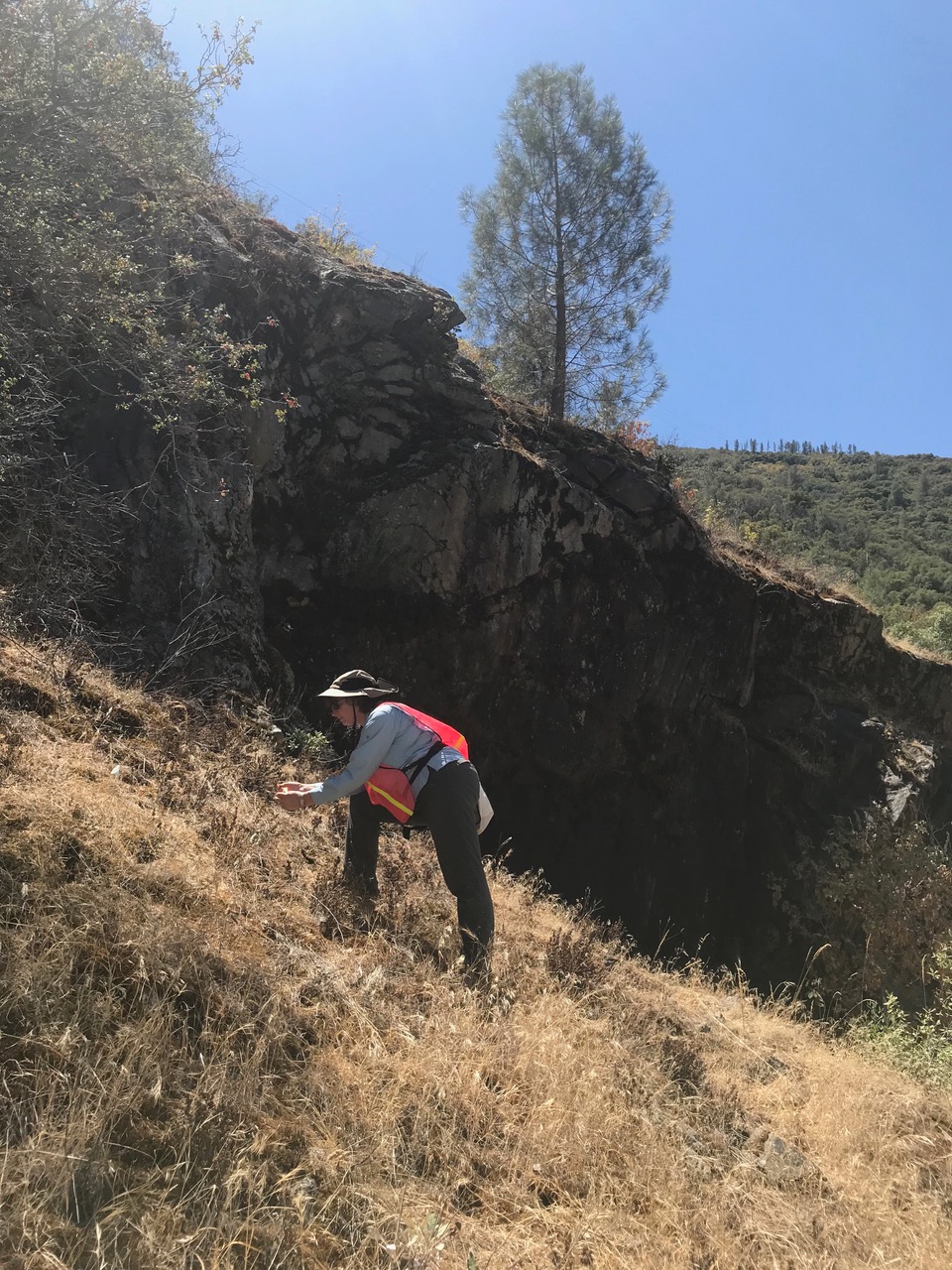
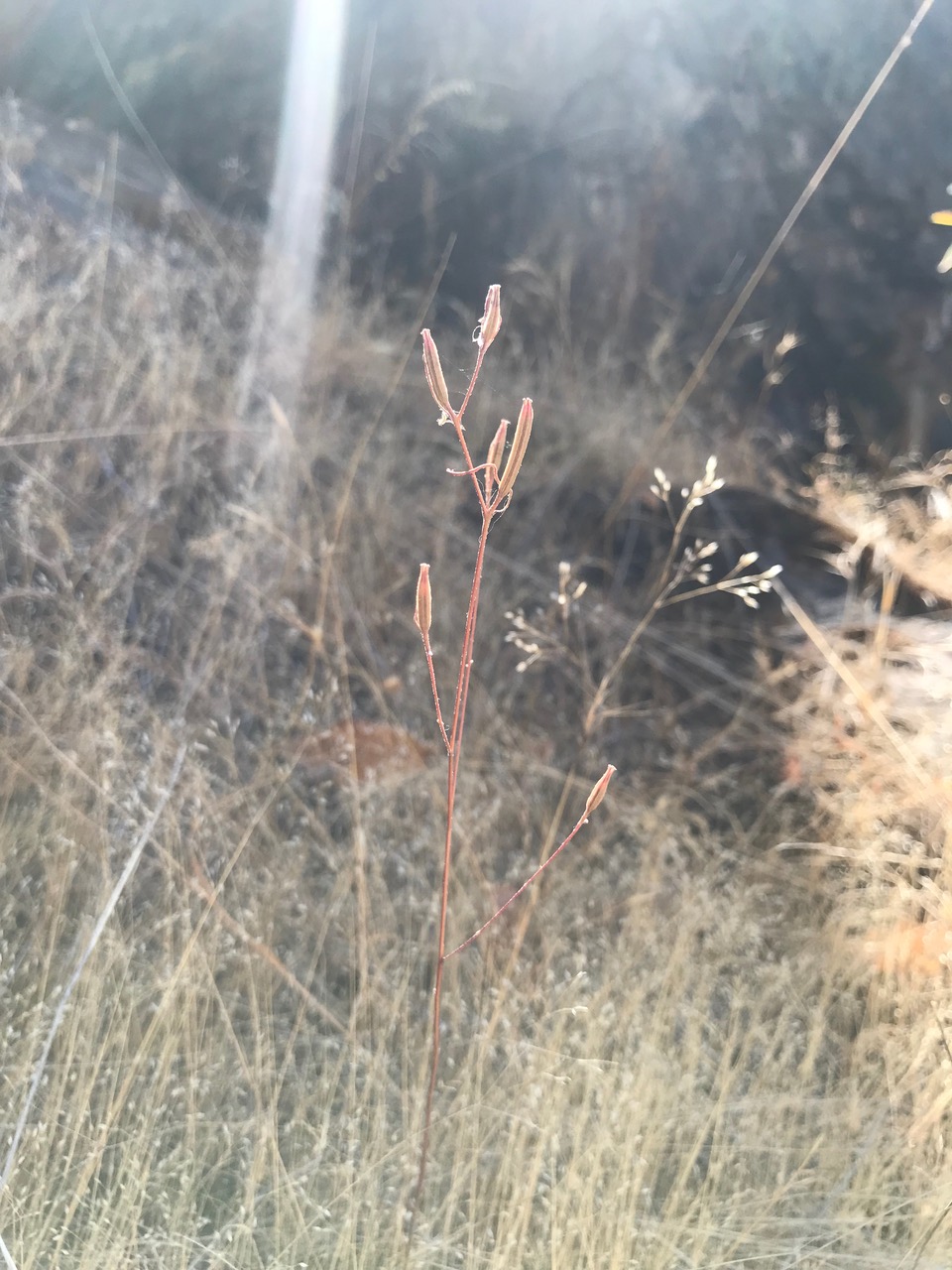
Their previous preparations helped the UCBG make quick work of the two populations, collecting seed from 122 individuals of one and 164 of the other in just a few hours before the long drive back to Berkeley. Quick does not mean easy. The collection was hazardous, collecting on a rocky roadside where car debris from recent accidents and rockslides are a semi-regular occurrence. The steep, rocky habitat made it difficult to collect evenly across the population. But they got what they could, and plan to bulk the seed in their nursery soon.
The two populations are separated at this time by a massive rock slide that closed Highway 140 for weeks, and necessitated the building of a single lane road on the opposite side of the Merced River and the erection of two one-lane bridges to bypass the destroyed road.
When Holly initially heard about the fire, she immediately thought of the clarkia – the uncollected seed of many still waving in the air, attached to the dry remains of the annual plants. Though the population should weather the fire well, the opportunity to collect would have been lost had the team not collected when they did – the road was closed for weeks after the collection and seed would have dispersed. It’s strange to think of a fire raging through an area you had just been walking through, of fire trucks and a swarm of firefighters occupying the space you had just been. But, for Holly, it was also a relief to know they had already secured seeds of the Merced clarkia.
Merced clarkia is just one of six clarkia species getting help from UCBG with their current USFWS project (coordinated by Valary Bloom and Josh Hull, USFWS Sacramento Office). The USFWS is funding their effort to conserve and increase the seed of clarkia species that are, as yet, not on the federal endangered species list, but are declining. Merced clarkia is threatened by big catastrophic events like fire and landslides, as well as poor road-side management – having been hit hard by roadside herbicide treatment a couple of decades ago. Other species are also susceptible to similar random events and other threats. All the targeted clarkias are to be maintained in conservation seed collections, along maternal lines (per CPC’s standards), and bulked to ensure there is enough seed to use when needed.
Having seed ready when it’s needed is, after all, what it’s all about. The Ferguson Fire is a good reminder of the importance of making conservation collections as soon as you can to make sure seed is obtained. Timing a seed collection can be difficult in general, but you never know when your target population may become inaccessible or even destroyed by any number of possible events.
Get Updates
Get the latest news and conservation highlights from the CPC network by signing up for our newsletters.
Sign Up Today!Donate to CPC
Thank you for helping us save plant species facing extinction by making your gift to CPC through our secure donation portal!
Donate Today